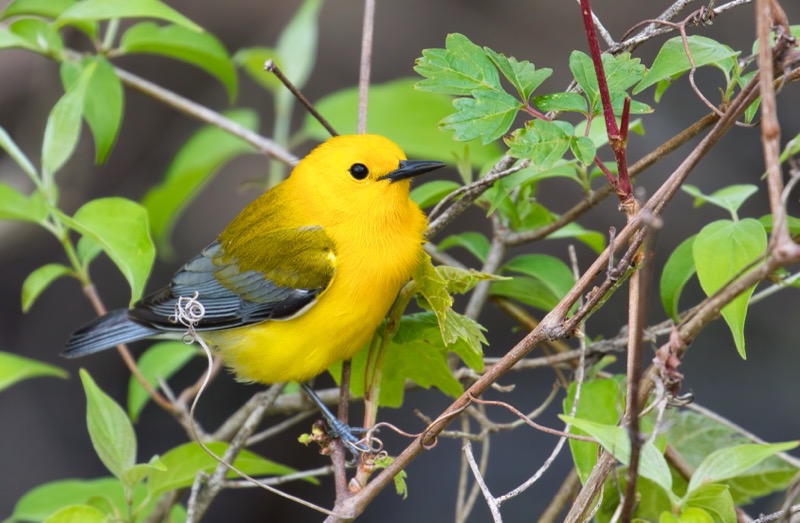I photographed this Prothonotary Warbler near Miners Cove at the Sequoyah National Wildlife Refuge in Oklahoma. These birds are known for staying in dense, woody areas near water, which makes getting a clear shot of them a real challenge. They’re especially elusive during the breeding season, as their focus remains on finding food and defending their territory.

This sighting happened when I was parked, watching for a raccoon I had seen earlier. To my surprise, this vibrant Prothonotary Warbler came near my pickup, hopping between vines. I took the opportunity to grab several photos, using my camera setup resting on a bean bag draped over the open window of my vehicle. The steady support from the bean bag allowed me to capture sharp images without disturbing the bird.
Prothonotary Warblers are a treat to see up close. Their golden-yellow bodies and blue-gray wings make them one of the most striking songbirds in North America. They prefer habitats like wooded swamps, flooded forests, and wetlands, and they nest in cavities, often using abandoned woodpecker holes. Conservation efforts have helped stabilize their populations, but habitat loss remains a concern.
Gear and Settings Used:
- Camera: Canon 7D Mark 2
- Lens: Canon EF 100-400 mm f/4.5-5.6L IS II
- Aperture: f/5.6
- Shutter Speed: 1/250 sec (auto)
- ISO: 800
- Exposure Compensation: 0.3
- Focal Length: 400 mm
Details:
- Location: Sequoyah National Wildlife Refuge, Oklahoma
- Date & Time: April 26, 2018, 9:44 A.M.
This encounter reminded me of the importance of being prepared. Having the right gear and setup allowed me to capture this bird in its natural behavior without interfering. It’s also a great example of how patience can yield unexpected rewards in wildlife photography.
If you’ve had success photographing warblers or other small, fast-moving birds, share your experiences in the comments. I’d love to hear what techniques work best for you when faced with challenging environments like this one.
